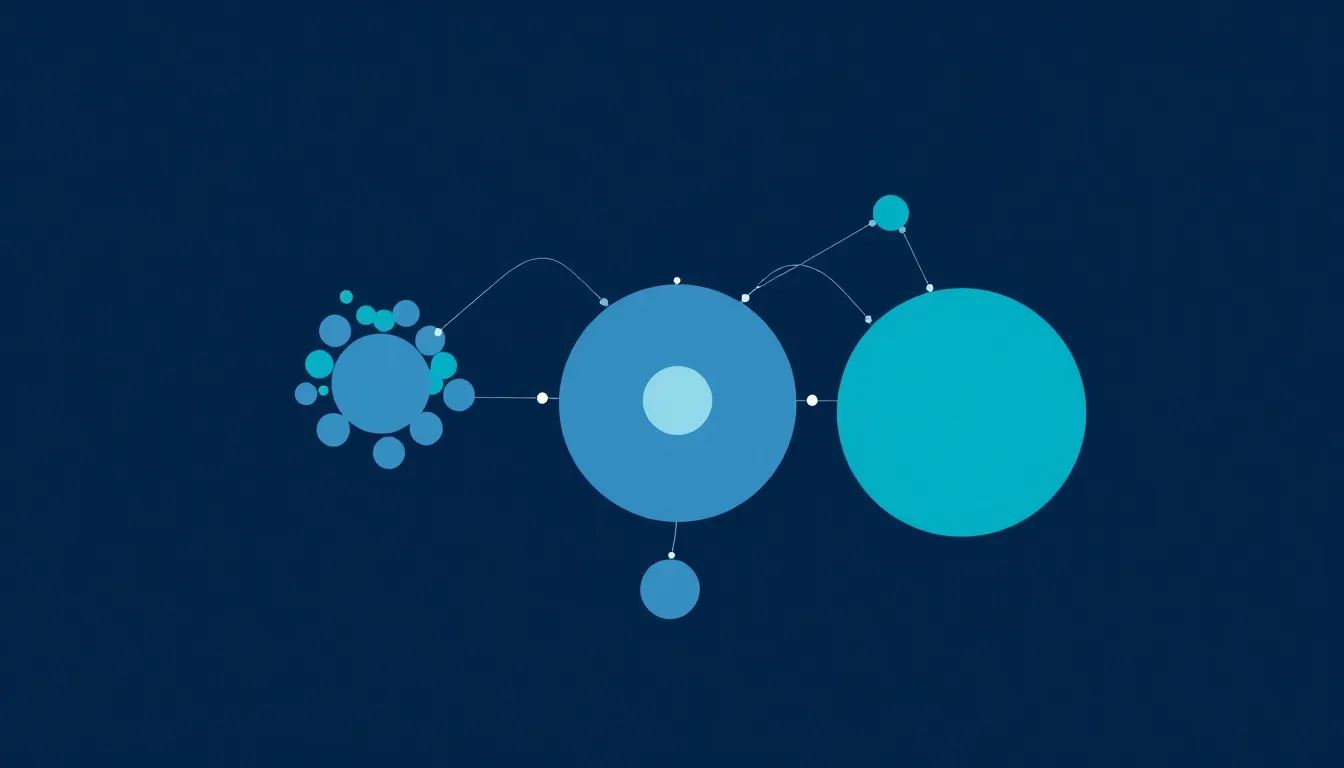Hook
In the research ecosystem, fraud wears many faces. The line between legitimate inquiry and manufactured insight is thinning as AI tools lower the bar for producing convincing yet false science. This is not a distant risk; it is unfolding now, fueled by papermills, a crowded marketplace, and editorial scrutiny chasing prestige. The main keyword here is the black market for fake science, a network where manuscripts, images, and authorship can be bought and sold with alarming ease. Researchers, editors, and policy thinkers must face a new normal where data can be faked at scale and claimed as fact.
As Luis A. N. Amaral and Pere PuigdomÈnech warn, the crisis is not only about bad papers but about incentives that reward volume over verification. The study shows how intermediaries connect writers, payers, publishers, and editors, pooling millions of dollars and undermining trust. Generative AI amplifies this threat, enabling rapid production of plausible studies and figures. Editorial scrutiny becomes a frontline defense, yet it cannot shoulder the burden alone; a broader reform of incentives and oversight is required to stem the tide.
We cannot pretend the problem is distant. “If we’re not prepared to deal with the fraud that’s already occurring, then we’re certainly not prepared to deal with what generative AI can do to scientific literature.” This is not a spectator sport; it demands vigilance, transparency, and reform from editors, funders, and policymakers alike. The question we pose is simple: who will safeguard trust as AI tools blur the line between real data and generated claims?
- Quick-read context: the scale and players in the black market for fake science
- Quick-read context: practical steps editors can take today

Insight – The Scale and Stakes
Fraudulent science is growing faster than legitimate research not by design but by the mechanics of the system. The incentive setup prizes novelty and high output while replication and verification often lag behind. Papermills flood the ecosystem with low quality manuscripts that look credible thanks to polished images and persuasive statistics. In this economy, the black market for fake science becomes a parallel industry where claims can be bought, refined, and released rapidly.
The Northwestern study signals systemic pressures pushing researchers toward speed over scruple. By tracing retractions, editor records, and image misuse across Web of Science Scopus PubMed/MEDLINE OpenAlex and Retraction Watch, the team maps networks built to undermine trust. Intermediaries connect writers, payers, publishers, and editors with millions of dollars, turning fraud into a coordinated enterprise rather than isolated incidents. The finding that fraudulent articles slip into journals like PLOS ONE shows the problem’s breadth. Generative AI acts as an amplifier, lowering barriers to produce convincing prose and figures and widening the footprint of questionable work. As one observer notes, Intermediaries connect all the parties who write, pay for, publish, and accept papers.
Key implications at a glance:
- Intermediaries connect all the parties and steer authorship for sale.
- Papermills mass produce manuscripts with falsified data and manipulated images.
- AI in science accelerates the creation and dissemination of fake studies.
- The incentive system must shift toward verification and replication instead of volume.
Leaders named include Luis A. N. Amaral of Northwestern University’s McCormick School of Engineering and Pere PuigdomÈnech, underscoring the call for stronger editorial scrutiny and reform as AI enters the workflow.
Evidence – Data Sources and Measurements
Evidence about fraudulent science in the Northwestern study rests on a multi source data approach. By linking publication records, editorial histories, and post publication discourse, the team triangulated signals of deception across disciplines. The data quality checks include cross validation across databases and timing patterns that reveal mismatches between reported methods and actual results. This rigorous foundation allows a cautious interpretation of the extent of papermills and the role of intermediaries in shaping the literature.
- Web of Science: used to map publication counts, citation networks, and retraction incidence across journals.
- Scopus: supplement to Web of Science in coverage, enabling cross database consistency checks and author networks.
- PubMed/MEDLINE: provided biomedical subset for cross field checks and detection of data irregularities.
- OpenAlex: offered a unified research graph to link authors, institutions, and articles across time.
- Retraction Watch: tracked retractions and notices to identify credible signals of integrity breaches.
- PubPeer: captured post publication discussions that flag image manipulation, data concerns, and methodological issues.
- Editorial metadata: offered submission and review histories, enabling signals of rapid acceptance or unusual review patterns.
Together these sources illuminate a dense network of actors and transactions behind the black market for fake science. Data quality and network signals converge to show that fraudulent science and papermills exploit structural incentives. The findings reinforce the call for stronger editorial scrutiny and incentive reforms to realign rewards toward verification, replication, and transparent reporting. The main keyword here is the black market for fake science, and related keywords include papermills, scientific fraud, and indicators/metrics.
Pull-Quote Box
These three compact statements summarize the core warnings about the rising black market for fake science. Read them as a quick compass for the risks that AI amplified fraud may bring to scholarly publishing. Each quote reflects concerns raised by the Northwestern study and its authors about intermediaries, incentive structures, and the ease with which convincing yet false findings can circulate. The quotes are designed to be read as stand alone lines that punctuate the article and underscore the need for stronger oversight, verified data, and reform of rewards in research. Placed together, they remind readers that protecting integrity requires action beyond words.
These indicators have rapidly become targets for measuring impact, generating unbridled competition and growing resource inequality. (Amaral et al., Northwestern study)
Intermediaries connect all parties; writers, payers, publishers, and editors must accept the paper to maintain legitimacy. (Amaral et al., Northwestern study)
If we’re not prepared to deal with fraud already occurring, we’ll be unprepared for generative AI’s impact on literature. (Northwestern study)
Table 1: Key Indicators and Risk Factors for Papermills
| Indicator | Definition | Why it matters | Potential AI influence |
|---|---|---|---|
| Data fabrication | The fabrication of data or results not supported by experiments or observations. | Undermines trust, leads to false conclusions, inflates productivity metrics. | Generative AI can generate plausible but false data patterns, simulate experiments, produce fake images. |
| Image manipulation | Alteration of images to misrepresent results (e.g., spliced figures, duplicated panels). | Misleads readers and reviewers, compromises reproducibility. | AI powered image editing and synthetic images can bypass standard checks, increasing detection difficulty. |
| Authorship for sale | Authors pay intermediaries to appear on papers they did not contribute to. | Distorts accountability, inflates author metrics; corrodes authorship ethics. | AI could draft content to justify authorship or assist in creating credible author lists; the sale is driven by prestige. |
| Editorial red flags | Unusual review timelines, sudden acceptance, unusual journal placements, red flags in editorial history. | Signals compromised gatekeeping and potential papermill use. | AI can simulate convincing reviews; red flags may be missed if automation not in place. |
| Rapid retractions | Quick retracting of papers after publication signaling integrity breaches. | Indicates systemic risk and need for post publication scrutiny. | AI generated content may be caught after publication; detection tools must keep pace. |

Insight – AI as an Accelerator and the Need for Oversight
Generative AI has the potential to speed the production of scientific writing, but in the context of a vulnerable incentive structure it can also hasten the spread of fake science. The Northwestern study shows that fraud thrives when speed and scale are rewarded, creating an ecosystem where papermills and intermediaries coordinate authorship, production, and publication for profit. As AI tools generate plausible text, plots, and data visuals, the boundary between genuine results and convincingly faked findings blurs. This dynamic does not merely increase the volume of questionable outputs; it raises the stakes for readers, reviewers, and funders who rely on reported evidence. The core risks stem from misaligned incentives, opaque data provenance, and weak gatekeeping across journals, which together enable rapid dissemination of unverified claims. To counter this, structural reforms are essential. Editorial scrutiny must adjust to AI assisted production, datasets used for training should be audited for representativeness and integrity, and authorship should be clearly attributed with verifiable contributions. Transparent incentives, including rewards for replication and data sharing, can reorient effort toward verifiable knowledge. The main keyword remains a sharp lens: the black market for fake science expands when AI lowers production costs without tightening accountability.
- Policy takeaway: enforce data provenance audits, fund replication, and tie incentives to verifiable results.
- Research takeaway: mandate explicit authorship contributions and demand independent validation for AI generated claims.
- Governance takeaway: raise editorial standards and harmonize indicators of integrity to deter papermill assisted outputs.
Payoff
The payoff translates the analysis into four concrete actions that target the core drivers of the black market for fake science.
-
Improved metadata and data provenance. Require comprehensive metadata schemas for datasets and images, including instrument parameters, processing steps, versioning, and data provenance. Mandate open data with persistent identifiers and truthfully flag AI assisted components. Metadata hygiene enables independent verification and reduces ambiguity when papers are scrutinized after publication.
-
Independent data verification and replication. Independent data verification and replication. Before acceptance of high risk studies, require independent validation of data and analysis pipelines by a designated third party. Encourage journals to fund or partner with replication services and to publish code and raw datasets alongside articles to enable reproducibility. Transparent provenance checks undermine papermills by making fabrication harder to conceal.
-
Editor training and governance. Editor training and governance. Implement mandatory training on papermill indicators, image forensics, and AI generated content detection. Use standardized reviewer checklists and escalation protocols, and create cross journal editorial partnerships to share best practices. Regular audits of editorial timelines and decision patterns reinforce accountability.
-
Incentive realignment. Incentive realignment. Realign rewards toward replication, data sharing, preregistration, and transparent reporting rather than sheer output or venue prestige. Tie grants and promotions to demonstrated verifiable results and responsible authorship practices, and impose consequences for undisclosed AI assisted manipulation.
Call to action. Researchers adopt preregistration and publish data and code; editors implement robust verification checklists; funders require replication plans and data availability. Together we can shrink the black market for fake science.
Table 2: Detection and Prevention Measures
| Area | Examples | AI/Automation roles | Expected impact |
|---|---|---|---|
| Pre publication screening | Checks for data provenance, image duplication detection, manuscript screening for papermill indicators, author contribution verification | Automated screening pipelines, image forensics, anomaly detection, cross journal metadata checks | Reduces fraudulent submissions, strengthens gatekeeping, speeds up decision process, improves trust |
| Image forensics | Detection of manipulated images, duplicated panels, spliced figures | AI based image integrity analysis, perceptual hashing, deepfake detection | Prevents falsified visuals, improves reproducibility |
| Data availability | Open data and code, datasets, processing steps, metadata standards, provenance tracking | Automated provenance tracking, data fingerprinting, checks for AI generated data | Enhances verifiability, enables replication, deters fabrication |
| Post publication monitoring | Post publication peer review, retraction monitoring, image forensics follow up, anomaly detection in published results | AI monitors for patterns in citations, new reports, counterfactual anomalies, automatic commentary analysis | Catches fraud after publication, maintains trust, triggers corrections |
Conclusion: Call to Action and Synthesis
The hook warned that AI can turn convincing yet false science into a fast moving problem unless we change course. The insight shows a system where incentives prize speed and novelty, letting papermills and intermediaries push low quality work into the literature. The evidence maps a web of authors, editors, payers, and publishers bound by millions of dollars, with fraudulent articles slipping into journals such as PLOS ONE. Taken together, these signals reveal a fragile trust economy that must be fortified now.
Urgent reform is essential. AI will accelerate both legitimate discovery and fraud, but it will do so most effectively if unchecked by weak governance. The path forward rests on stronger editorial scrutiny, transparent data provenance, explicit authorship contributions, and funded replication. We must audit AI aided content, align rewards with verification, and require open data and code where feasible. These steps can shift incentives toward reliability and verifiability rather than volume.
Call to action: researchers share data and code, editors deploy rigorous checks, funders require replication plans, and publishers enforce transparent reporting. The stakes touch researchers, publishers, funders, and the public; trust in science depends on how we respond today. The main keyword black market for fake science and related keywords include papermills, scientific fraud, fake science, indicators/metrics, retracted publications, authorship for sale, citations for sale, editorial scrutiny, AI in science, generative AI, defunct journals, intermediaries, and research integrity.

Glossary of Key Terms used in this article
- papermills: unscrupulous operators who mass produce manuscripts and sell authorship or papers. They may include falsified data and manipulated images.
- scientific fraud: deliberate misrepresentation of data or methods that misleads readers and damages trust in science.
- editorial scrutiny: the process by which editors review submissions for quality and integrity before publication, acting as a guardrail against dishonest work.
- AI in science: the use of artificial intelligence tools to assist with research writing data analysis or decision making. It can speed work but raises risks if used to publish false claims.
- generative AI: a form of AI that can produce text and other output. When used in science it can create convincing but fake results.
- data verification: checks that confirm data are accurate reproducible and well documented.
- data provenance: the history of data origin and processing, essential for trust and reproducibility.
- indicators and metrics: signals used to assess study quality and impact, such as replication status retractions or image integrity.
- intermediaries: people or firms that connect writers payers publishers and editors in fraud networks.
Context: The main keyword for this article is the black market for fake science.
Related keywords include papermills scientific fraud fake science indicators metrics retracted publications authorship for sale editorial scrutiny AI in science generative AI data verification data provenance and research integrity.
FAQ Reader Questions Answered
-
Q1 What is the black market for fake science?
A It is a network of papermills and intermediaries that mass produce papers and offer authorship or manuscripts for sale. It relies on false data and manipulated images.
-
Q2 How can AI be misused in this context?
A Generative AI can draft convincing text and plausible data and generate fake figures. Without safeguards it lowers the cost of fraud enabling rapid publication and misleading citations.
-
Q3 What steps can journals take?
A Strengthen editorial scrutiny require transparent authorship and data provenance. Demand open data and code, invest in AI assisted detection, and support replication across journals.
-
Q4 How should readers respond when unsure about a paper?
A Check for inconsistencies in methods and data provenance; look for rapid acceptance and unusual citations. Verify claims with independent sources and consult retractions or PubPeer discussions.
-
Q5 Why is this issue urgent now?
A AI in science can accelerate both legitimate discovery and fraud. Strengthening incentives toward verification and replication can reduce risk and protect trust as AI tools expand.

